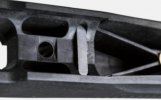ShtrRdy
Well-Known Member
If so, could you explain it to me?
Is it just the curved feature by the action screws? Or the flat part on the bottom? Or the curved sides?
After I had the barrel replaced on a T3 Varmint model I'm having trouble developing a load because i keep seeing two shots very close to each other and one shot further away. I've tried a full span of powder charge weights and seating depth lengths with the powder and bullets I have had good experience with in the past.
Is it just the curved feature by the action screws? Or the flat part on the bottom? Or the curved sides?
After I had the barrel replaced on a T3 Varmint model I'm having trouble developing a load because i keep seeing two shots very close to each other and one shot further away. I've tried a full span of powder charge weights and seating depth lengths with the powder and bullets I have had good experience with in the past.

